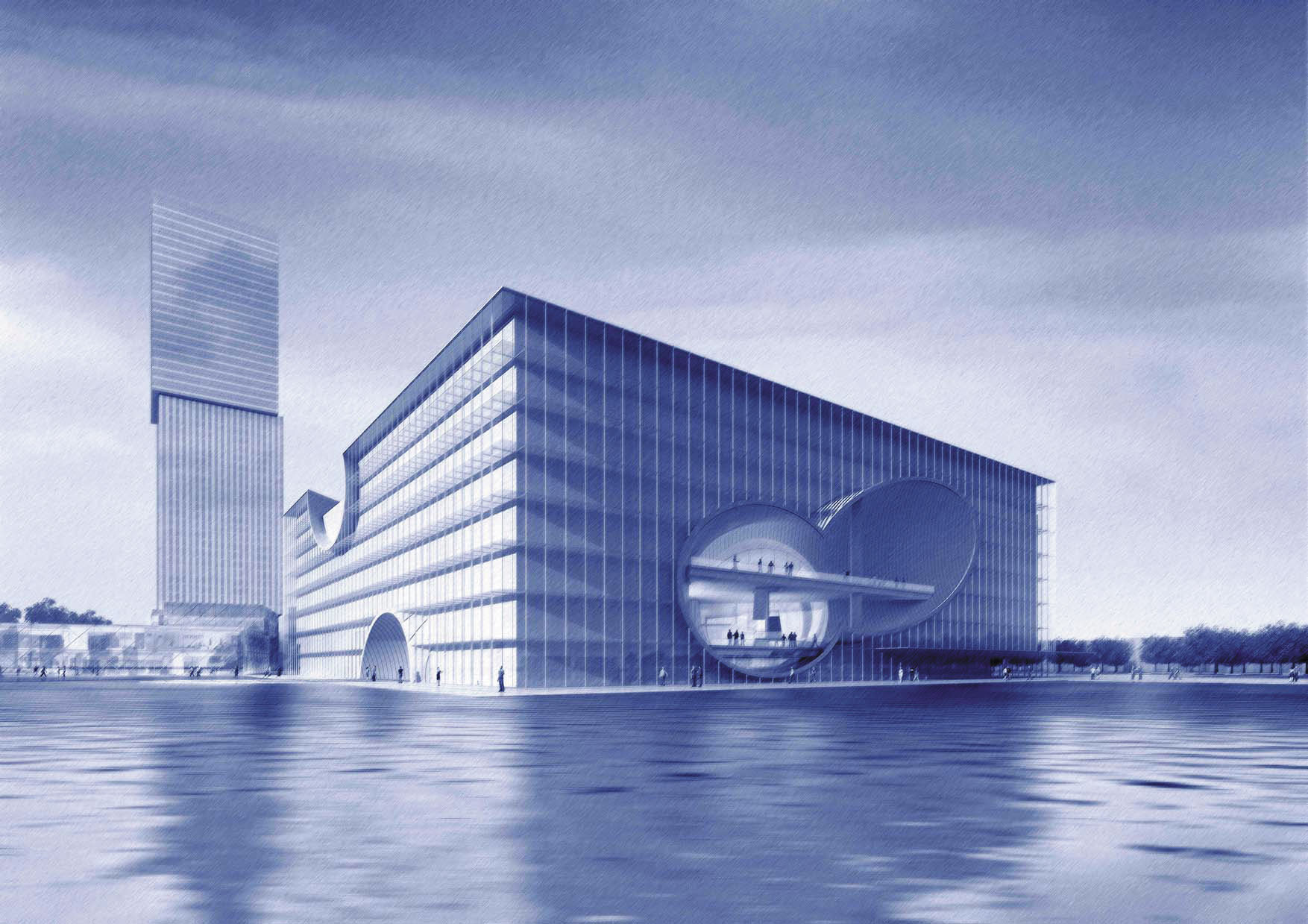Like any prominent, PR-savvy architect these days, Tadao Ando likes to present himself as a sensitive sort, one who adjusts his architectural approach to harmonize with the unique features and characteristics of each local site. The latest exhibition of his architectural models, drawings and graphics at Tokyo's Gallery GA gives us a chance to consider whether this is true.
Gallery GA is operated by Global Architecture, a publisher of architectural magazines and books. It's a popular venue for architects to show their work to an audience that includes other architects as well as designers, students and enthusiasts.
According to Makoto Yamaguchi, an editor for GA, the present exhibition, titled "Sights on the Mainland," was arranged to coincide with the World Congress of the International Union of Architects, known by its French acronym UIA. This event, which was held last month, has seen a flurry of architectural exhibitions that are continuing into the autumn.
"In the past, we have held two one-man exhibitions of Ando: in 1987 and 2000," Yamaguchi says. "This is the third one. Because the UIA congress was held in Tokyo this year, Mr. Ando wanted to show his latest intentions in architectural design."
Ando was one of the key speakers at the congress and its most popular attraction. He drew a crowd of nearly 5,000 to a wide-ranging lecture that also referred to some of the designs showcased in the exhibition, most notably his ongoing project constructing the Shanghai Poly Theater, a multi-purpose building centered round an opera stage.
"His consistent philosophy is architecture based on the climatic-cultural context that originated in the philosophy of the Kyoto School," Yamaguchi explains, referring to the 20th-century Japanese intellectual movement that included elements of Buddhism and a heightened respect for Asian traditions against the onslaught of Western modernism.
But while such intellectual underpinnings can play an important part in shaping an architect's practice, other unacknowledged factors also creep into the equation. In his lecture at the UIA congress, Ando made much of the fact that he was a daring and innovative architect who was constantly opposed by conservative bureaucrats, bean-counters, and other people of limited imagination.
But in emphasizing this, with examples that included his Honpukuji Water Temple on Awaji Island in Hyogo Prefecture and 21_21 Design Sight in Tokyo, he also revealed that he is an architect whose main focus is on jaw-dropping, breath-taking design. Of course, if he wasn't he wouldn't be the big name in architecture that he is today.
Such mold-breaking seems to transcend "climatic-cultural contexts" and work against a respect for Asian conditions. It seems to place Ando alongside the likes of Zaha Hadid, Frank Gehry and other media-savvy globalist architects, whose shimmering creations could be dropped down from the sky almost anywhere in the world to astound the baffled locals.
An example of this is Ando's Chikatsu Asuka Museum — an institute dedicated to Japan's ancient past — which placed a giant and oppressive, mausoleum-like structure on a hill site. While there is no denying the technical skill involved, the element of overkill is blatant and distracts from the purpose of the building.
The exhibition's main focus is on Ando's Shanghai Poly Theater. Interestingly, this reveals a strong synergy between Ando and China's continuing development and construction boom. In recent years, Ando's company has been increasingly involved in China, which is also what the "mainland" in the title of this exhibition refers to.
The models at the exhibition reveal the Poly Theater as a square prism, 100 × 100 × 30 meters, bisected by vast angled tubes that create large futuristic passageways. Its inflation of simple geometric elements to gargantuan size reduces the visitor to the status of an awe-struck ant (at least for the first visit).
In his lecture, Ando praised the architectural ambition and can-do spirit in China that gave the green light to this forceful design, contrasting it with a rather more conservative approach in Japan.
"The mayor of Shanghai said that there are two more major opera-house projects being planned," he told the UIA congress. "I asked who'd be the opera singers if there were going to be three opera houses, and he said he hadn't thought about that yet, which is very Chinese, I guess.
"Japanese people are aware of the significance of planning, but obviously the Chinese feel that energy is all they need!"
Through his particular brand of hard-headed brashness, it seems as if Ando has found a soulmate across the water — and also a social context, or at least an economic one, that seems a perfect fit for his eye-catching architectural ambition.
"Tadao Ando: Sights on the Mainland" at Gallery GA runs till Nov. 6; admission ¥500; open daily 12 noon-6:30 p.m. For more information, visit www.ga-ada.co.jp.



















With your current subscription plan you can comment on stories. However, before writing your first comment, please create a display name in the Profile section of your subscriber account page.